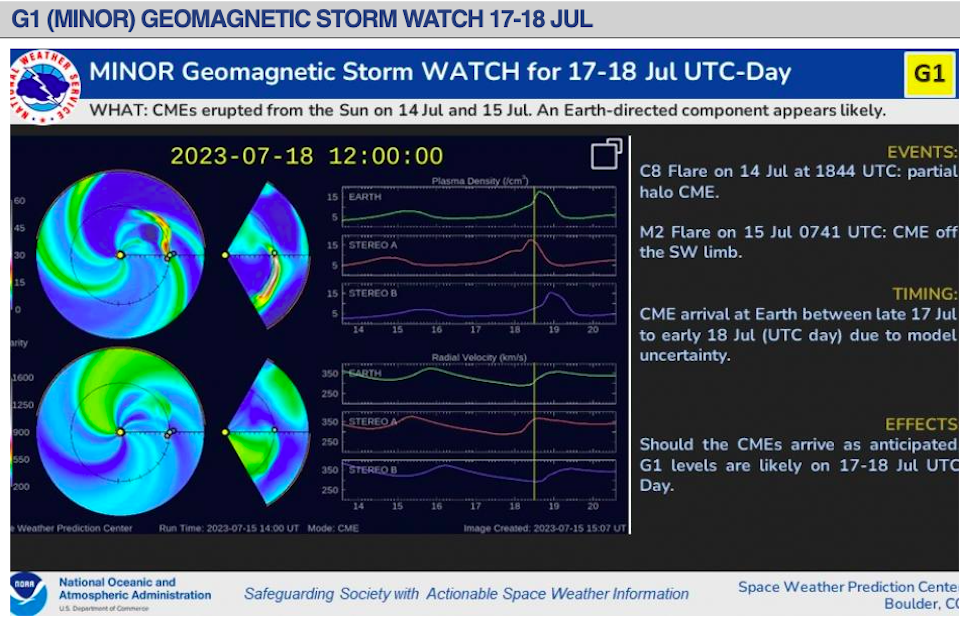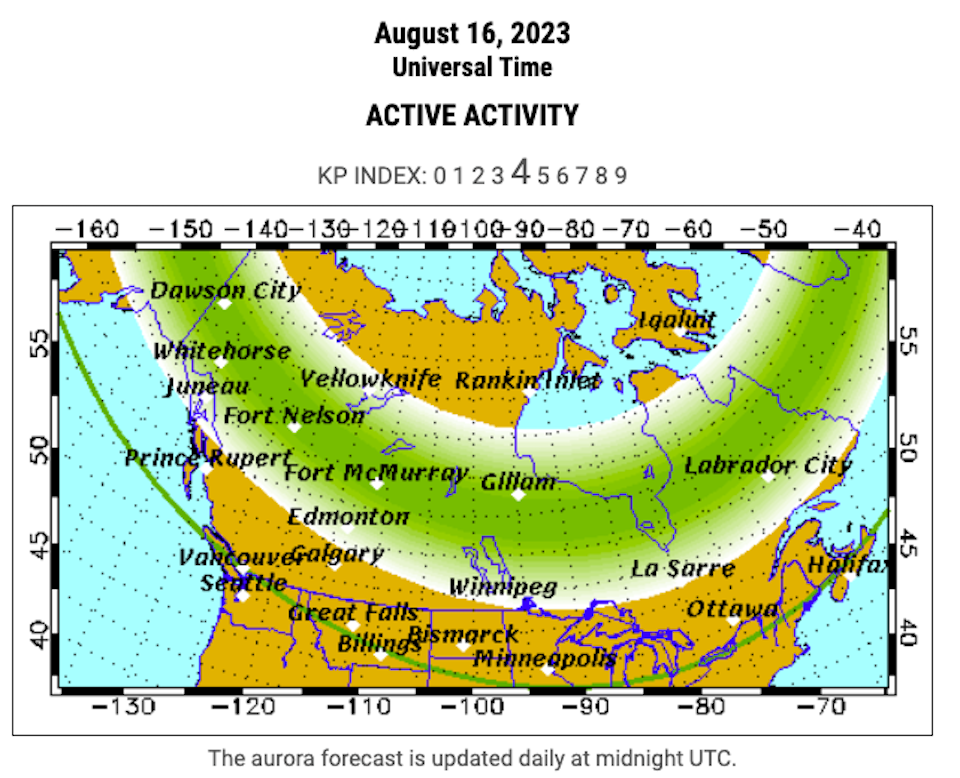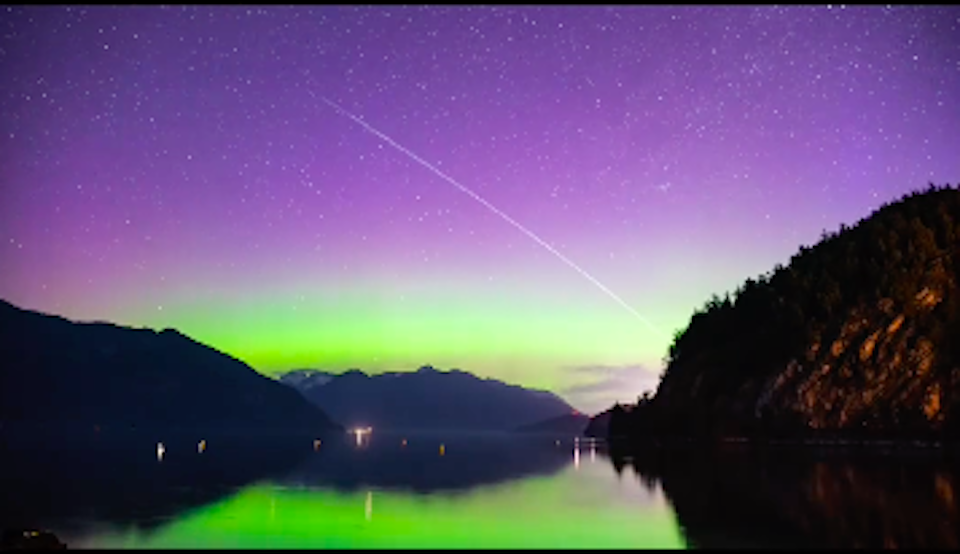Mother nature's paintbrush could produce a haunting green glow over parts of Metro Vancouver this week.
The awe-inspiring aurora borealis is expected to be visible in areas as far south as Portland, Oregon, due to some stormy space weather.
The National Oceanic and Atmospheric Administration (NOAA)'s Space Weather Prediction Center has issued a G1 (minor) geomagnetic storm watch for Thursday, Aug. 17, and Friday, Aug. 18.
The U.S. space centre says coronal mass ejections that erupted from the sun over the weekend should arrive on Earth sometime on Thursday or Friday.

Metro Vancouver weather forecast offers ideal conditions for viewing northern lights
The University of Alaska Fairbanks (UAF) says the "auroral activity will be active" starting Wednesday, with displays possible overhead from "Inuvik, Yellowknife, Rankin, and Iqaluit to Juneau, Edmonton, Winnipeg, and Sept-Iles, and visible low on the horizon from Vancouver, Great Falls, Pierre, Madison, Lansing, Ottawa, Portland, and St. Johns."
The university's online aurora monitor map shows what regions the aurora's green glow will likely reach, as well as other areas where there is less of a possibility. Additionally, there is a brief description below the map of the aurora activity on that particular day. You can switch to other days to see the forecast, too.

On Thursday, the UAF expects that there will be similar viewing opportunities across North America, with the displays possible overhead in cities like Yellowknife, Edmonton, and Winnipeg, and with the aurora's green glow reaching as far south as Vancouver, Ottawa, and St. Johns.
The Metro Vancouver weather forecast includes bright sunshine and clear conditions overnight for the remainder of the working week. Find out what the conditions are expected to be in your neighbourhood.

While it is possible to view the northern lights in Vancouver, your best bet for seeing the green glow is up north or outside of the city where there is less light pollution.
If you spot the aurora, it might not appear green or any other colour. Instead, you'll see an arcing, milky manifestation moving in the sky. In order to capture that green glow, you'll need to use a camera with a longer exposure.
Find out more northern lights information and viewing tips with our comprehensive guide.



